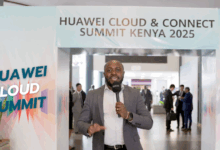DUNCAN AZENGA: In a Hybrid Working Environment future, integrating company communications is key

In the last two years, the COVID-19 pandemic has severely impacted not just the ability of companies to commit to innovation and new initiatives, but also work practices for majority of their staff. Subsequent lockdowns have led to many businesses having to be staffed remotely, as well as being able to provide employees with the technological and human support they need to be at their best during these incredibly trying times.
Over 2020 and 2021, a driving need emerged seeing employee collaboration and innovation remain central to business needs. At the same time company workforces – having had to work remotely for vast periods in the last two years – now desire more flexibility when it comes to their working environment and the time periods during which they work.
Gartner research has found that 71% of human resources leaders were increasingly focused on employee collaboration in 2021. This is likely to be a major initiative going forward in the coming year.
On top of these concerns, 2020 and 2021 gave rise to a massive and deepening skills crisis, which has been dubbed ‘The Great Resignation’. The last two years have seen employees leave jobs in their droves; the Harvard Business Review reveals that four million Americans left their jobs in July 2021 alone – a trend reflected in statistics across the UK and Europe, and that is unlikely to bypass Kenya. There are many factors contributing to this massive loss of skilled employees from the job market, but key among them is lack of support from employers and inflexibility when it comes to their working conditions.
To wit, more employees than ever before desire the right to choose when and where they work, how they work and more support from employers with regards to tools and technology to make their working experience as collaborative with management as possible.
The Hybrid Working Environment
All of this has given rise to what has been dubbed the ‘Hybrid Working Environment’ model. At surface level this is a combination of remote and office working, which allows most employees the ability to better collaborate with management on which environment compliments their workstyles and aids them to best deliver on key performance indicators (KPI’s).
In many instances it can be beneficial to adopt the Hybrid Working Environment model – companies can save on costs on office space (or indeed, rent out that space they own), the workforce is more nimble and easier to be deployed as and where it’s needed, and it compliments employee personality types on a wider scale, allowing them to thrive in less constrictive environments.
The overarching theme during the Microsoft 365 Summit emphasized that companies that adopt such interventions will have a significant impact on who stays, who leaves, and who seeks to join different teams. Ultimately, companies must approach the next phase of work carefully.
Cloud Voice
That having been said, the Hybrid Working Environment model is not a simple transition and needs investment and, in many instances, requires companies to pivot completely from traditional working practices. Key among these is the need for connectivity and communication platforms that compliment digital and remote working. Processes, technology and business solutions need to be put in place to ensure productivity in an agile, digital environment. To that end many businesses can look for a Cloud Voice platform that can provide a cost-effective and reliable solution to compliment a Hybrid Working Environment.
At its core, Cloud Voice, is designed not only to empower diversity and inclusion in the workforce, but to move away from the business requirement of hardware and installation – an absolute must in the new era where office-bound working is becoming less of a priority and, in some instances, obsolete altogether. Cloud Voice brings a business’s voice, video meeting and messaging tools together in one portal, which is flexible and can be scaled to each company’s needs.
Cloud-based unified communications platforms offer companies significant cost benefit, particularly in Africa. Compared to the heavy costs of traditional telephony systems, service providers and contract durations, Cloud Voice is month-to-month, has a clear cost breakdown, doesn’t demand extensive infrastructure investment.
A New Way of Working
As businesses move forward in 2022, the Hybrid Working Environment has already replaced many traditional working practices. Unified communications as a service (UCaaS) platforms have already removed the hardware and expensive long-term contracts and could very well spell the end of in-house service provisions. Above all else, it’s placed a premium on employee needs, promoting a nimble, remote environment in which management caters for the needs of its workforce in terms of hardware, skills and satisfaction.
Duncan Azenga is the Head of Cloud Solutions, Liquid Intelligent Technologies, Kenya.
Follow us on Telegram, Twitter, Facebook, or subscribe to our weekly newsletter to ensure you don’t miss out on any future updates. Send tips to info@techtrendske.co.ke.




